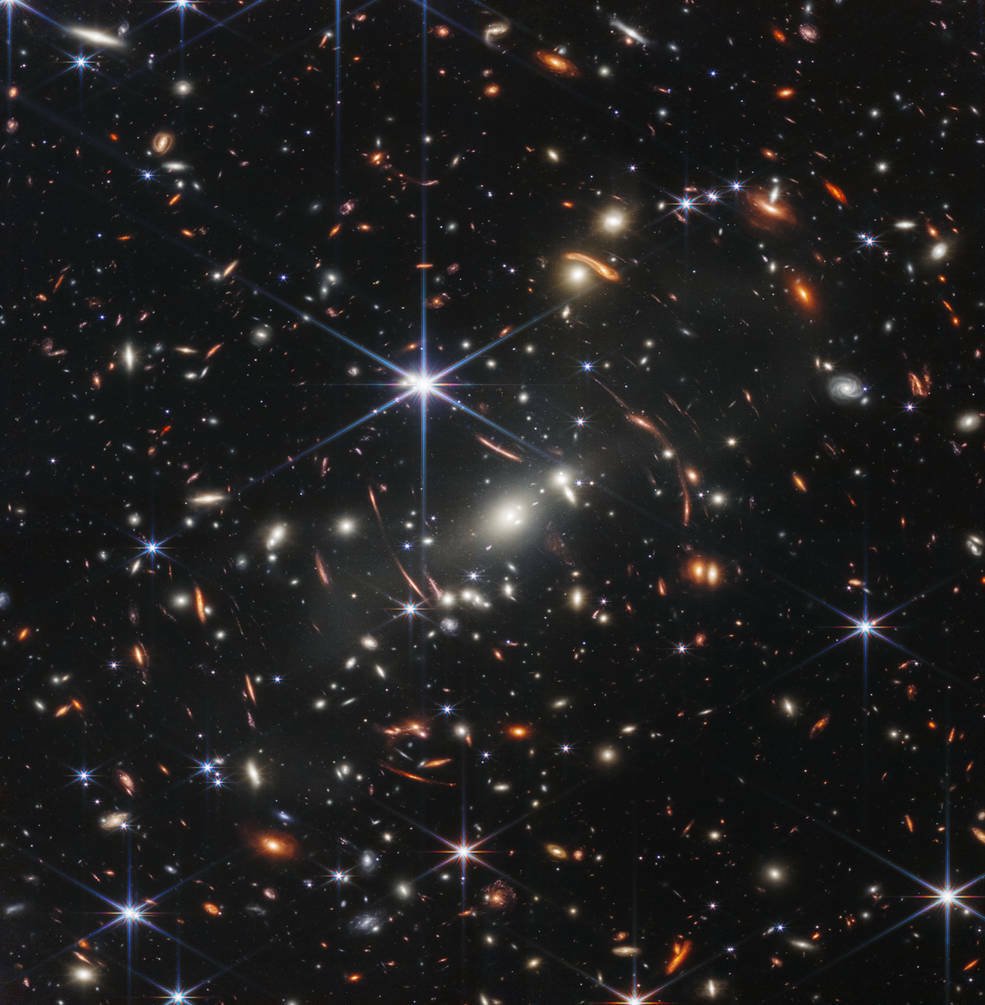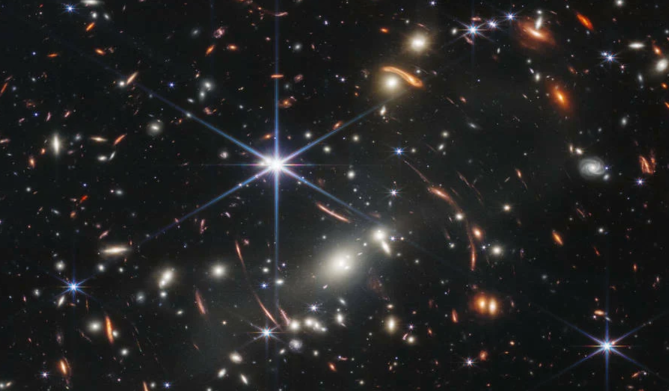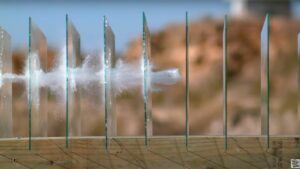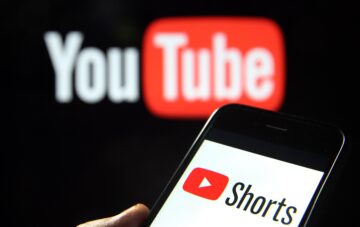In the first image NASA released from the Webb telescope, some galaxies look like strings of stretched taffy.
That’s because the universe itself has altered our view of the deep cosmos.
Astronomers recently pointed the colossal James Webb Space Telescope at a cluster of galaxies dubbed SMACS 0723. Crucially, galaxies are enormously massive objects as they contain hundreds of billions of stars, millions of black holes, and perhaps trillions of planets. The combined mass of these galaxies warps space, like a bowling ball sitting on a mattress.
This warped space essentially creates a “lens” that we look through. So the light from the galaxies behind this galactic cluster that we (or the Webb telescope) ultimately see is distorted. It’s an occurrence called “gravitational lensing.” As the Space Telescope Science Institute (which runs the telescope) explains: “It’s like having a camera lens in between us and the more distant galaxies.”
Albert Einstein predicted the effect of gravitational lensing over a century ago. Some of the galaxies we can view below in Webb’s first deep view into the cosmos, then, are magnified, and some are profoundly stretched or distorted.
“They’ve been magnified by the gravity of the cluster, just like Einstein said they would,” NASA astrophysicist Jane Rigby said at the reveal of Webb’s first scientific images.

Credit: NASA / ESA / CSA / STScI
In the image above, the cluster of white-looking, ethereal galaxies are some 4.6 billion years old. They formed around the same time as the sun and Earth, Rigby said. It’s these white galaxies that magnify and alter the view behind.
These more distant objects, which include both the red dots and bizarrely-distorted galaxies, are among the oldest objects in the cosmos. “All the super faint, dark-red tiny dots, as well as many of the brighter, strangely shaped objects in this astounding image are extremely distant galaxies that no human eye has seen before,” Harald Ebeling, an astronomer at the University of Hawaii Institute for astronomy, said in a statement.
The faintest objects in this Webb image are some 13.1 billion years old, Rigby said. Yet Webb will soon look even farther into the past, over 13.5 billion years ago, soon after the first stars and galaxies formed.
The deep space observatory
The Webb telescope — a collaboration between NASA, the European Space Agency, and the Canadian Space Agency — is designed to make unprecedented discoveries. “With this telescope, it’s really hard not to break records,” Thomas Zurbuchen, an astrophysicist and NASA’s associate administrator for the agency’s Science Mission Directorate, recently said at a press conference.
Here’s how Webb will achieve unparalleled things:
-
Giant mirror: Webb’s mirror, which captures light, is over 21 feet across. That’s over two and a half times larger than the Hubble Space Telescope’s mirror. Capturing more light allows Webb to see more distant, ancient objects.
“We’re going to see the very first stars and galaxies that ever formed,” Jean Creighton, an astronomer and the director of the Manfred Olson Planetarium at the University of Wisconsin–Milwaukee, told Mashable last year.
-
Infrared view: Unlike Hubble, which largely views light that’s visible to us, Webb is primarily an infrared telescope, meaning it views light in the infrared spectrum. This allows us to see far more of the universe. Infrared has longer wavelengths than visible light, so the light waves more efficiently slip through cosmic clouds; the light doesn’t as often collide with and get scattered by these densely-packed particles. Ultimately, Webb’s infrared eyesight can penetrate places Hubble can’t.
“It lifts the veil,” said Creighton.
-
Peering into distant exoplanets: The Webb telescope carries specialized equipment, called spectrometers, that will revolutionize our understanding of these far-off worlds. The instruments can decipher what molecules (such as water, carbon dioxide, and methane) exist in the atmospheres of distant exoplanets — be it gas giants or smaller rocky worlds. Webb will look at exoplanets in the Milky Way galaxy. Who knows what we’ll find.
“We might learn things we never thought about,” Mercedes López-Morales, an exoplanet researcher and astrophysicist at the Center for Astrophysics-Harvard & Smithsonian, told Mashable in 2021.












